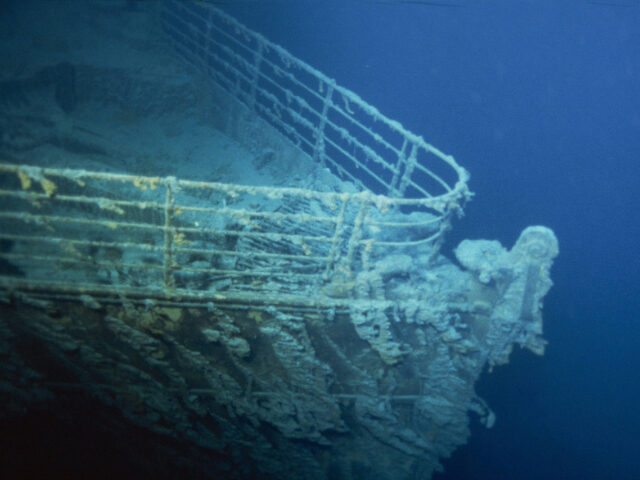The latest research expedition to the sunken Titanic has unveiled notable changes and discoveries from the ship’s wreckage in the first mission to its remains since the June 2023 OceanGate Titan implosion.
A bronze replica of the iconic “Diana of Versailles” statue, the original of which is located in Paris’s Louvre Museum, that had not been seen since 1986 was photographed by one of RMS Titanic, Inc.’s remotely operated underwater vehicles, the research organization shared Sunday:
“[S]ome art was built to stand the test of time, like the Roman goddess Diana who sat atop the fireplace mantle in the First Class Lounge,” the Georgia-based company wrote on X.
“Following 112 years on the ocean floor and a brief sighting in 1986, she is still resting upright among miles of debris. Like the eternal Roman deities, she is timeless–and she is rediscovered thanks to Expedition 2024,” it added.
While the re-discovery of the roughly two-foot statue was a “highlight” because most experts feared it “had been lost forever,” RMS Titanic, Inc. also announced a more somber discovery.
“[A] significant section of the railing surrounding the Bow’s forecastle deck have fallen from the port side prow where it stood as recently as 2022,” the company said in a Monday press release.
“This alteration irrevocably changes one of Titanic’s most recognized and symbolic visuals.”
One of the unmanned vessels that RMS Titanic, Inc. launched captured a video of the deteriorating rail structure of the ship:
“RMS Titanic, Inc. is thrilled to share the first images and remarkable discoveries from our 2024 Expedition,” the company’s director of collections, Tomasina Ray, said. “The discovery of the statue of Diana was an exciting moment. But we are saddened by the loss of the iconic Bow railing and other evidence of decay which has only strengthened our commitment to preserving Titanic’s legacy.”
In total, the crew spent 20 days at the remote Atlantic Ocean shipwreck site before returning to Providence, Rhode Island, on August 9 and processing more than two million images and videos.
The research team also “fully” mapped the site with LiDAR (Light Detection and Ranging) sonar and hyper magnetometer tools “to enhance our understanding of its historical significance.”
“The team is now focused on carefully processing the data so findings can be shared with the Titanic and scientific communities and historically significant and at-risk artifacts can be identified for safe recovery in future expeditions,” the company added in its press release.
The expedition, which began in July, comes as the U.S. Coast Guard investigates the underwater failure of the experimental Titan submersible, which led to the deaths of OceanGate CEO Stockton Rush, 61; French submariner Paul-Henri Nargeolet, 77; British billionaire and explorer Hamish Harding, 58; Pakistani businessman Shahzada Dawood, 48; and his 19-year-old son, Suleman Dawood.
Nargeolet was the director of underwater research for RMS Titanic, Inc. when he was killed in the Titan implosion.
“It’s tough but the thing about exploration is that there’s an urge and a drive to keep going. And we’re doing that because of that passion P.H. had for continuous exploration,” Rory Golden, a friend of Nargeolet’s who served as chief morale officer of the RMS Titanic mission, told BBC News before the vessels’ launch.
A public hearing on the Coast Guard’s investigation will occur later in September, ABC7 reported.

COMMENTS
Please let us know if you're having issues with commenting.